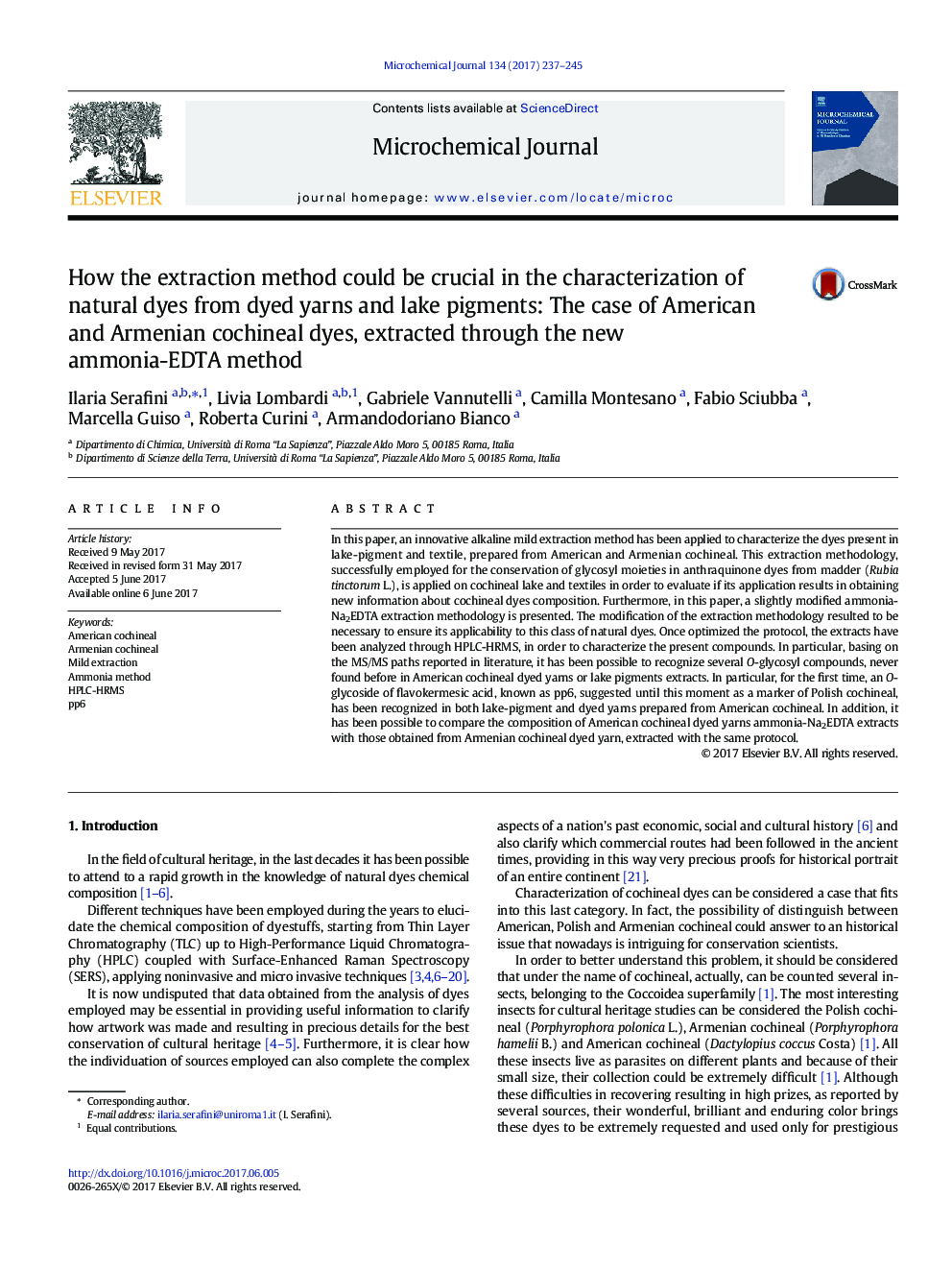| Article ID | Journal | Published Year | Pages | File Type |
|---|---|---|---|---|
| 5139122 | Microchemical Journal | 2017 | 9 Pages |
Abstract
In this paper, an innovative alkaline mild extraction method has been applied to characterize the dyes present in lake-pigment and textile, prepared from American and Armenian cochineal. This extraction methodology, successfully employed for the conservation of glycosyl moieties in anthraquinone dyes from madder (Rubia tinctorum L.), is applied on cochineal lake and textiles in order to evaluate if its application results in obtaining new information about cochineal dyes composition. Furthermore, in this paper, a slightly modified ammonia-Na2EDTA extraction methodology is presented. The modification of the extraction methodology resulted to be necessary to ensure its applicability to this class of natural dyes. Once optimized the protocol, the extracts have been analyzed through HPLC-HRMS, in order to characterize the present compounds. In particular, basing on the MS/MS paths reported in literature, it has been possible to recognize several O-glycosyl compounds, never found before in American cochineal dyed yarns or lake pigments extracts. In particular, for the first time, an O-glycoside of flavokermesic acid, known as pp6, suggested until this moment as a marker of Polish cochineal, has been recognized in both lake-pigment and dyed yarns prepared from American cochineal. In addition, it has been possible to compare the composition of American cochineal dyed yarns ammonia-Na2EDTA extracts with those obtained from Armenian cochineal dyed yarn, extracted with the same protocol.
Keywords
Related Topics
Physical Sciences and Engineering
Chemistry
Analytical Chemistry
Authors
Ilaria Serafini, Livia Lombardi, Gabriele Vannutelli, Camilla Montesano, Fabio Sciubba, Marcella Guiso, Roberta Curini, Armandodoriano Bianco,
